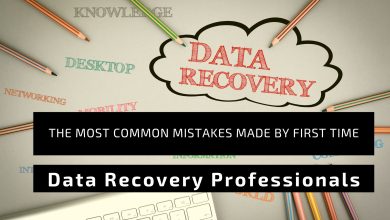How Businesses Can Improve Their Online Reputation

Your online reputation is crucial for attracting new clients and maintaining existing clients. Your online reputation will reflect your customer service skills and the frequency with which you miss deadlines. Even if you don’t do anything wrong, harmful content from third parties can damage your reputation.
This guide will show you how to create and maintain a stellar online reputation and how to fix one that has been damaged.
Online reputation is crucial for your business
Your online reputation is what people think about you as a brand or company. Therefore, a strong reputation is the key to success. However, a poor one can deter potential clients who haven’t done business yet.
What happens to a prospective client who finds many negative reviews? What should a prospective client do if they find a dismal article at the top of Search Engine Results Pages? It’s possible to conclude that your online reputation is causing you to harm and preventing others from reaching you.
Online Reputation Management is the proactive solution.
What is Online Reputation Management?
Online Reputation Management (or ORM) refers to strategies or techniques that can influence the information available online about your business.
Harmful content that ranks highly in search engines is a significant factor. It is done to make defamatory content less prominent by using more positive articles, reports, blogs posts, etc. As a result, positive digital assets outrank the negative on SERPs.
Local businesses can use review platforms such as Angie’s List or Trustpilot. Customers love reviews and put a lot of emphasis on them.
How is your online reputation?
We now have a better understanding of the importance and benefits of ORM. It’s time for you to assess your current situation. Then, consider how you want to be perceived by your business in the future.
Assessing the current situation
You can find out what your customers think of you by doing extensive Google research. Just type the name of your company or brand, along with products and services. Then, make sure you search for reviews, reports, and other keywords.
Page 1 in the SERPs is the most popular. Prioritize the top two or three pages depending on how much you are willing to spend. You should also check out the content on other websites and social media platforms. This approach will make it more difficult to find all the content about your business online.
Mention is one of my favorite tools. Mention is a paid tool that monitors social media, forums, and blogs in real-time. Alerts provide live updates when your brand is mentioned.
Google Alerts, another helpful tool we use for our clients and ourselves, is another example of an alert system. You can keep track of all new content published in Google and index it (including videos). It is the best way to ensure you don’t miss any. It’s also free!
How to create a Google Alert
- It is a standard tool for web admins who are experienced. But, it’s not necessary for everyone. So, here are some steps to set up a Google Alert.
- Go to https://www.domain.com/alerts and enter the name of your business or any other keyword.
- You can set up an email alert to be notified whenever new content is published.
If you wish, you can also set preferences such as how often notifications are sent, content sources, language, and region.
Socialmention.com is a free alternative for Mention. It monitors multiple social media platforms simultaneously. It also provides valuable information about your business, including the strength and likelihood of being discussed on social networks.
Go Fish Digital Complaint Box is an excellent option if you are concerned about complaints. It searches over 40 complaint websites and displays all negative results. Enter your business name, and then wait for the search results to show up.
How you want to be perceived by your business
Your online reputation should be defined in a similar way to branding. It should be aligned with your strategic business goals and your vision for your company or brand. It is an excellent way for you to determine any discrepancies in your online and offline reputation by interviewing business partners, clients, and other stakeholders.
How to repair or build an A+ online profile
Now that you have a good idea of the state of your online reputation, it is time to build it. Some businesses may need to start from scratch. Others may need to rebuild a bad reputation. These are the steps to take to make a positive online image.
1. Online review management
Online review management is essential, I won’t lie, for cloud service providers and eCommerce stores that sell nationally, but it’s crucial for local marketing.
BrightLocal is an excellent source of statistics that I love to quote. For example, BrightLocal, a provider of SEO software, found that 88% of local consumers trust online reviews more than personal recommendations. A further important insight was that 48% need at least four stars to choose a business.
Online reviews can be a boon or a curse. It is essential to manage online reviews proactively and adequately just like Reputationsciences.com. Paying someone to create fake reviews can expose your company to additional risks. We encourage customers to leave honest feedback and as many positive reviews as possible. It is done by
- We do everything possible to make our clients happy.
- We are registering with the top review platforms.
- Encourage happy clients to leave reviews
- Negative feedback can be handled.
1.1 Registering with review platforms and choosing a platform
People are more likely to leave reviews on sites they already have an account for and are familiar with. Register your company with as many platforms as you need, but not too many. Thoughts can be scattered if you register with every directory. You will appear more authoritative if you have dozens of reviews.
Google My Business is a great platform to focus on as a local business, especially initially. The following are other options worth considering:
- Yelp
- Yellow Pages
- Better Business Bureau
- Angie’s List
- Trustpilot
- Amazon
- Directory specific to each industry
1.2 Encourage happy clients to leave reviews
How can you increase your monthly business reviews?
First, make sure every client is happy. The second step is asking for it. Do not skip Step 1. It will only cause you harm.
After you have completed step 1, contact a client to ask them for a rating of your business. Again, use appropriate language and be subtle. Asking for one in person during a face-to-face meeting can yield better results than asking via email or phone.
Note: Some platforms like Yelp prohibit you from asking for reviews. It would help if you did not offer any incentives for reviews. It not only destroys the purpose of business reviews but also means that your business listing could be removed if you violate the terms of service.
1.3 Managing negative feedback
Negative client feedback can be more challenging to manage. So how do you handle negative client feedback professionally?
My opinion is that if you make mistakes, it’s best to admit them and work with your client to find the best solution. Do not ignore negative reviews or fail to respond promptly. It shows that you don’t care about your clients or what they have to share.
If you can please a client and win their loyalty, ask the client to update his review.
2. Content suppression
Negative SEO and content suppression are two completely different things. Harmful third-party content that is not related to your business can be pushed down the SERPs without causing any harm to the publisher or owner.
However, this is not true if you point thousands of spammy URLs to another website to hurt its rankings. Thus, it is unethical, and may in some cases, violate local or national laws.
3. Removal of content and defamation
Reverse SEO takes time to come into effect. So what should you do if you find a piece of content you wish to remove?
You should first review Google’s content guidelines. Then, you can request that Google remove the content from its services if it violates applicable laws. This Google Support page will direct you to the right tool to start a request for content removal.
Even if a guideline violation is not applicable, you can still contact the author or publisher and attempt to persuade them to take the content down. Other options include court-ordered injunctions and cease and desist orders.
People are permitted to express their opinions online, as per law. Therefore, it is possible to express their opinions online without fear of consequences. However, there is a distinction between publishing false or defamatory content and expressing your opinion to damage the reputation of a company or individual.
Courts have set legal precedents regarding online defamation, and a court order can remove this content.
4. Social media
Social media is a powerful channel for digital marketing. It doesn’t matter how big or small your business is; social media is a powerful tool for building a solid online reputation.
This route requires that you remain committed if you want to continue. So keep active and do not neglect any profiles. It’s better to concentrate on one or two shapes if you don’t have the resources to manage them all on multiple platforms.
It takes time to build a positive online reputation
It is not difficult to build a solid online reputation. Start by reviewing your online reputation and identifying areas that need your attention. Next, follow the above steps to create a system that will work for you.
Building a positive online reputation takes time. However, it’s possible to be patient and persistent if you put in the effort.
Disclaimer. The opinions and views expressed in this article are the authors Andrew Napolitano.





